
An in-depth look at the mighty Smith & Wesson 1006 in 10mm Auto.
It’s said that necessity is the mother of invention. Many useful products have resulted from the efforts of someone to improve something that didn’t work well.
For example, a highly publicized shootout in 1986, in which two FBI agents were killed, had some people convinced the 9mm Luger pistols used by agents weren’t able to keep two suspects from fighting on for far too long.
Whatever the case may be, it was determined that handguns chambered for a more potent cartridge were in order. Attention was turned to the 10mm Auto, a .40-caliber cartridge made in 1983 by adapting a shortened .30 Remington case. The shortened case was used with bullets designed for the .38-40 Winchester. Instrumental in the development of the cartridge was Jeff Cooper, who was always a proponent of large-caliber pistols such as the .45 Auto.
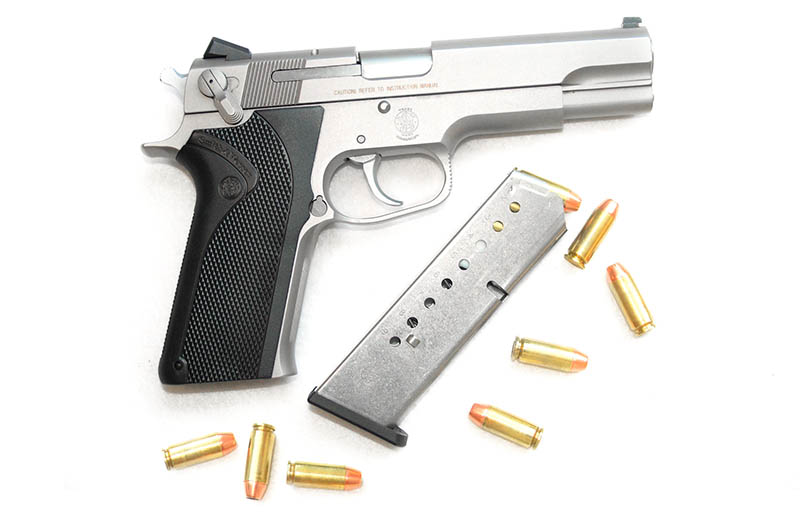
Some factory loads for the 10mm Auto develop over 600 foot-pounds of muzzle energy, making such a pistol a very powerful handgun indeed. In fact, in tests it proved to produce more recoil and blast than many agents could deal with.
Accordingly, a lighter load was developed; the light load was amenable to a shorter case and thus the .40 S&W was developed. Such cartridges could be adapted to shorter and lighter pistols of a size that fired 9mm Luger cartridges. There’s no free lunch, and it has subsequently been observed that even the .40 S&W is a bit much for many officers, and the cartridge is hard on the machinery in small pistols.
As a result, after the dust settled, the FBI returned to service pistols chambered for the 9mm Luger. However, handguns (both autoloaders and revolvers) in 10mm Auto caliber are often chosen by hunters or for defense in wild areas.
A Pistol With Punch
The first pistol chambered for the 10mm Auto was the Bren Ten, but production of that pistol was short-lived. Soon after, Colt produced the Delta Elite in 10mm Auto, and Smith & Wesson introduced the Model 1006. The Colt pistol is a single-action autoloader that operates in the manner of the Model 1911 .45 Auto. However, the S&W 1006 is a double-action pistol that doesn’t need to be cocked for the first shot.
Thereafter, firing is in the single-shot mode. The double-action trigger pull is smooth and relatively light.
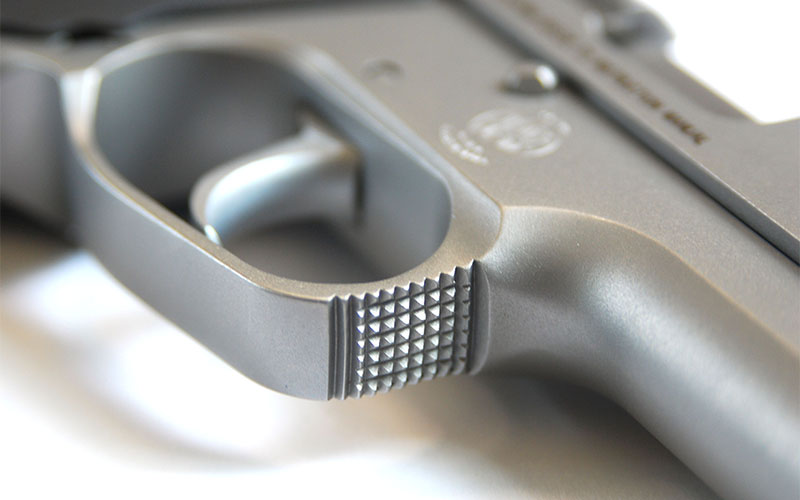
The S&W 1006 is a brute of a pistol made of all stainless steel. It has a 5-inch barrel and utilizes a single-stack magazine holding 9 rounds, offering 10 rounds with a cartridge in the chamber. It features dual slide-mounted safety levers that also serve to de-cock the pistol safely when the cocked pistol has a round chambered. The pistol also features a firing pin block that prevents the firing pin from striking a chambered cartridge unless the trigger is pulled.
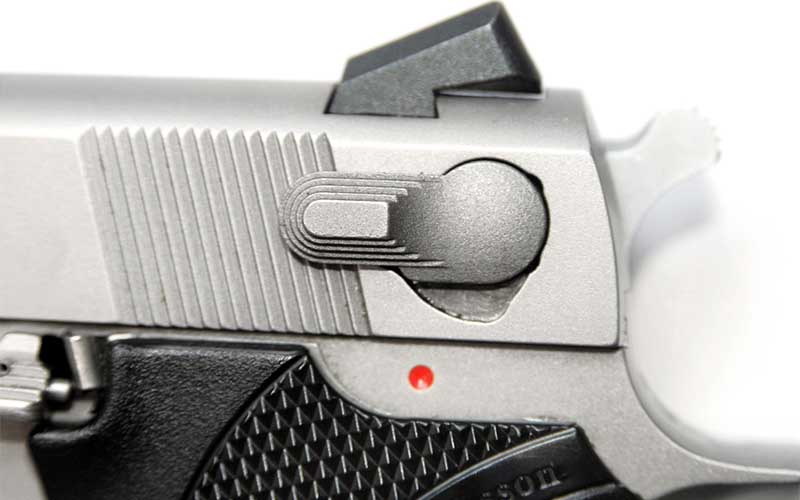
The 1006 has a magazine disconnect that prevents the pistol from being fired when no magazine is inserted. Grips are made of a plastic developed by General Electric known as Xenoy, and although they’re hard, they feature deep checkering on the side panels and backstrap.
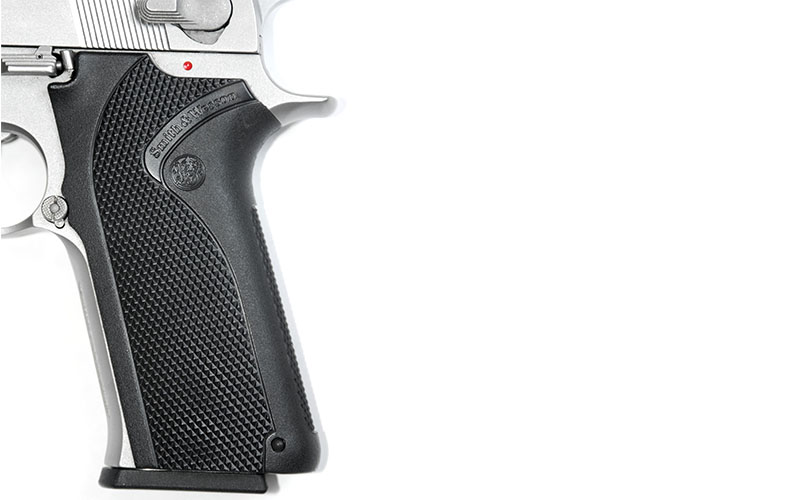
Several other 10mm pistols were produced by Smith & Wesson based on the 1006 design. One of these, the Model 1076, was produced for the FBI. It had a 4.25-inch barrel and no magazine disconnect so the pistol could be fired with the magazine removed. It also had a frame-mounted de-cocking lever mounted on the left-hand side of the frame similar to that found on Sig pistols.
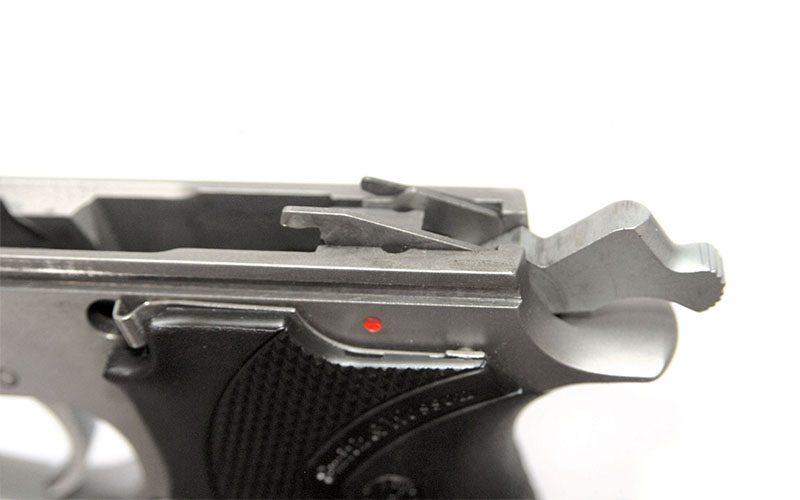
Other descendants of the 1006 include the 1026 that features a frame-mounted de-cocker and a 5-inch barrel, the Model 1046 that’s a double-action-only model with a 5-inch barrel, the 1066 that has a 4.25-inch barrel and slide-mounted de-cocking lever, and the 1086 double-action-only model that uses a 4.25-inch barrel.
The King Of The 10s
From data I’ve seen, 26,978 units of the Model 1006 were produced, and production of the other 10mm autoloaders totaled only 23,098. In my opinion, the S&W 1006 is the flagship of all 10mm Auto pistols produced by Smith & Wesson.
It’s a large, heavy pistol that was available with either fixed or adjustable sights. The front sight has a white dot on the rear face of the post, and the rear sight blade has white dots on either side of the notch. Alignment of the dots is an aid in sighting, especially in subdued light. Full-power factory 10mm ammunition is potent.
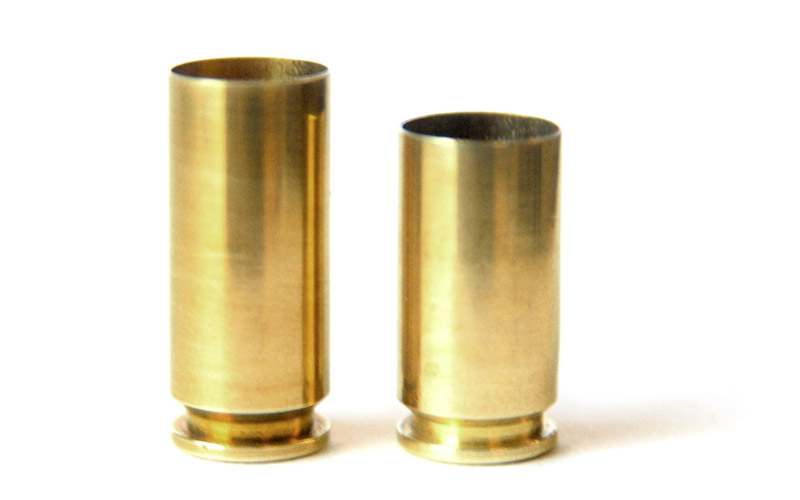
The maximum pressure limit set for the cartridge is 37,500 psi so 10mm pistols are robust, and the S&W 1006 certainly is. My 1006 has fixed sights and, with an empty magazine inserted, weighs 41 ounces on a postal scale. The physical characteristics of the pistol are such that when carried its presence will always be felt.
Although the S&W 1006 is a rather complicated pistol, it’s a simple matter to disassemble it for routine cleaning. With the magazine removed and the pistol cocked, the slide is moved to the rear until the notch on the slide aligns with the tab on the slide-stop pin. The slide-stop pin can be pushed out of the frame from right to left. With the pin removed, the slide can be moved forward off the frame.
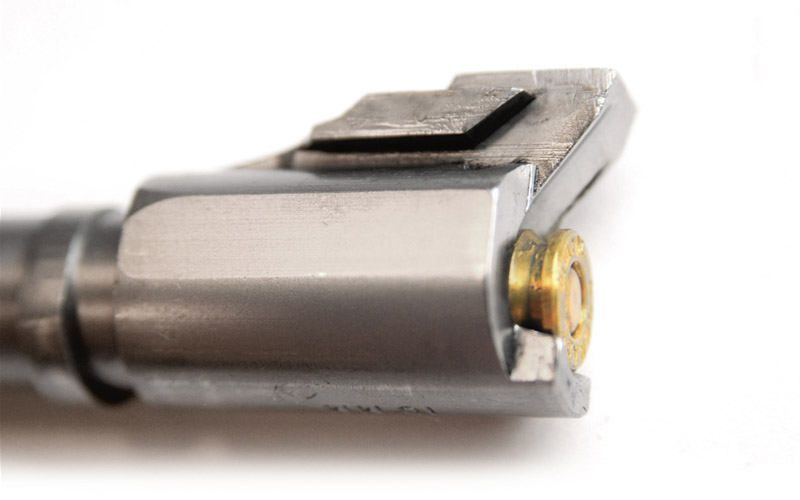
With the slide and barrel assembly inverted, the guide rod, recoil spring and barrel are accessed. The guide rod is held at the rear by a circular flange that mates with a notch on the underside of the barrel lug. The forward end of the recoil spring is captured in the recess on the slide. Pushing forward on the flange allows it to be freed from the barrel lug so that the guide rod and recoil spring can be removed from the rear. Cleaning and lubricating are now done in the conventional manner.
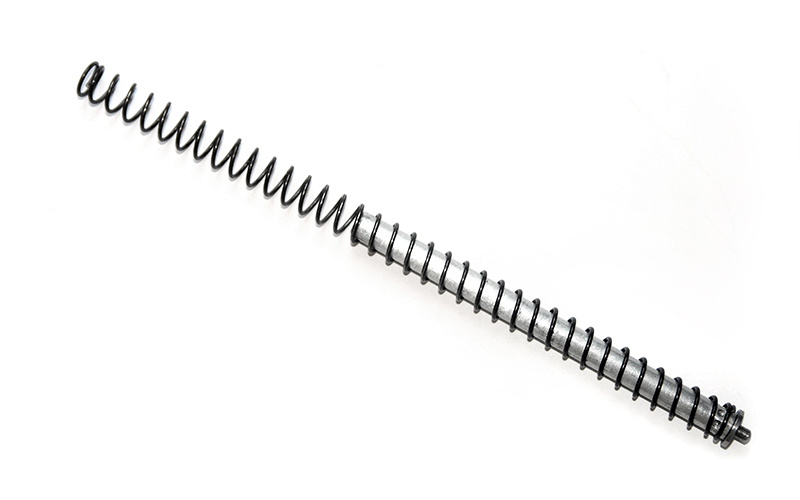
Reassembly is essentially the reverse of the disassembly process with a few minor issues. First, the barrel is placed in the slide in the locked position with the locking lug on the barrel in the mating notch in the slide. Second, the recoil spring is placed on the guide rod with the forward end inserted in the recess at the forward end of the slide. The spring is compressed by applying sufficient pressure at the rear end to make it possible to place the retaining flange on the barrel lug. This takes some hand strength! The slide is placed on the frame and moved rearward where it encounters the extractor.
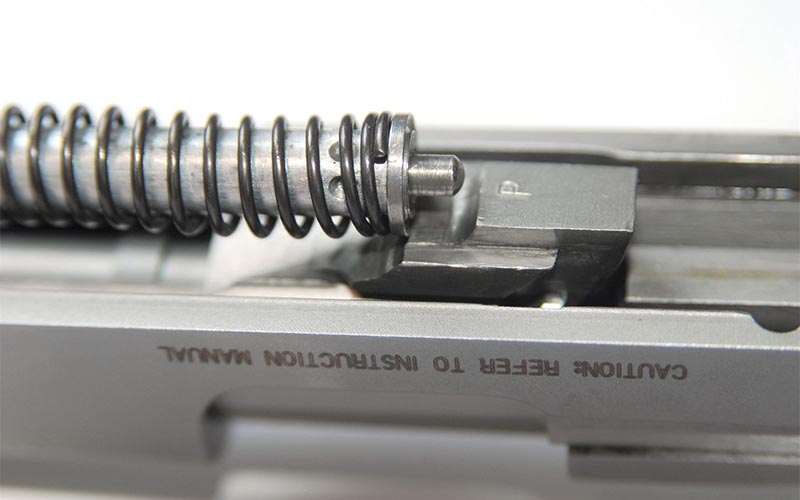
Third, the extractor must be pushed downward into the frame to enable the slide to continue its movement to the rear. Next, the slide encounters the firing pin safety lever, which must also be pushed downward into a recess in the frame. The slide can now be moved fully to the rear. When the notch in the slide aligns with the tab on the slide stop pin, the pin can be inserted.
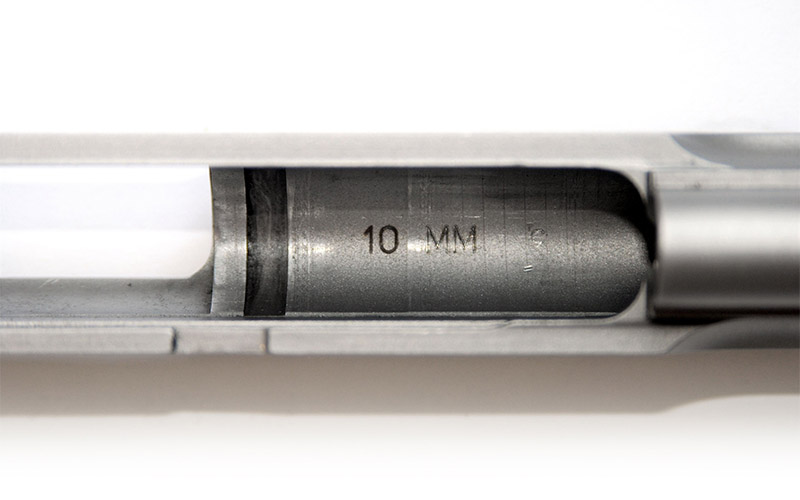
Big Ballistics
Some factory loads gave the following velocities (in feet per second at 10 feet from the muzzle) in my pistol: CCI Blazer 200-grain FMJ, 983 fps; Hornady Critical Defense 165-grain FTX, 1,231 fps; Hornady Custom 180-grain, 1,238 fps; Remington 180 FMJ, 1,105 fps; Winchester Silvertip 175-grain, 1,240 fps; and Winchester Subsonic 180-grain, 947 fps.
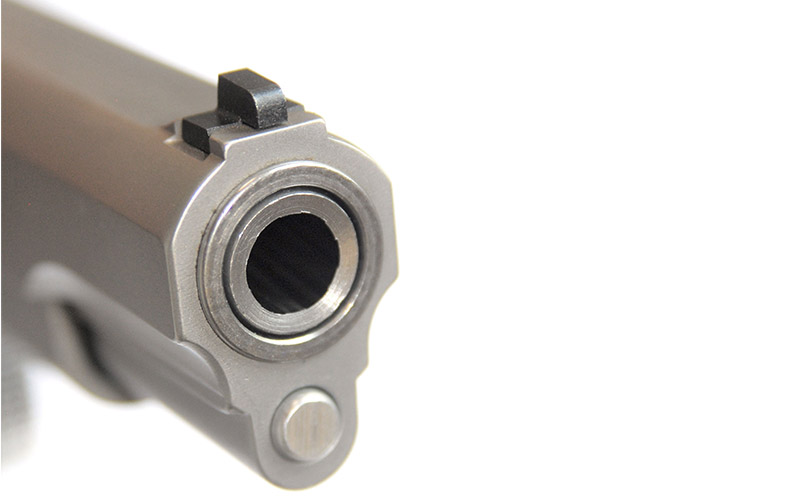
Interestingly, the Hornady Custom and Winchester Silvertip loads produce 613 and 598 foot-pounds, respectively, and the values would be slightly higher at the muzzle. Such performance is one reason why potent 10mm pistols are often chosen to provide security in remote places where there may be large predators. I’ve carried my S&W 1006 in some such places and although it’s heavy, it provides a considerable measure of reassurance.
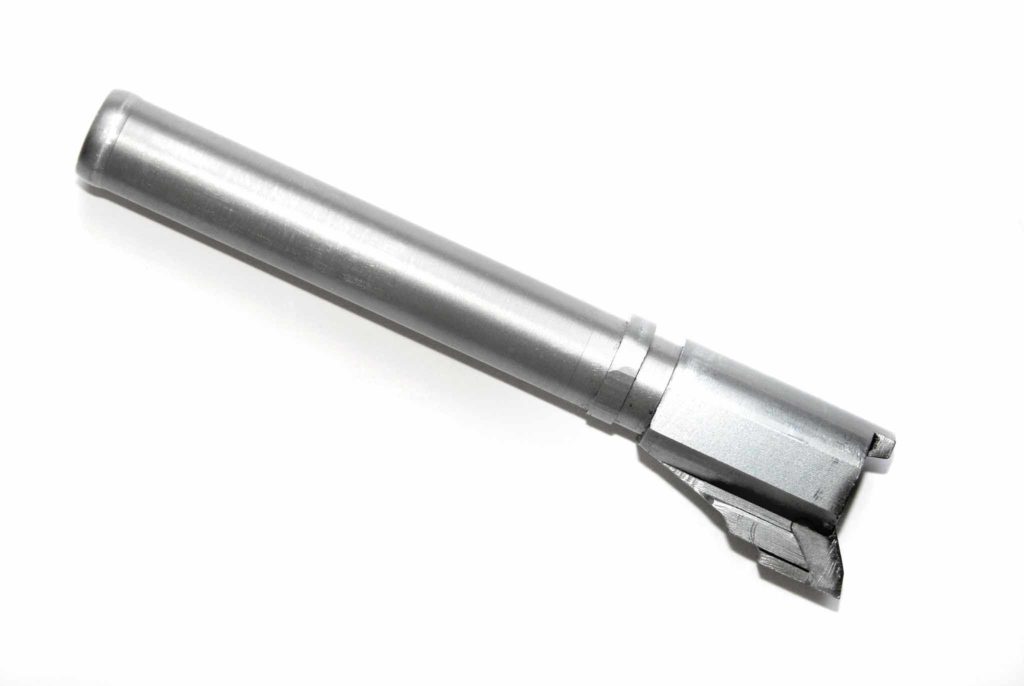
Most of the factory and handloads I’ve used in my 1006 hit very close to the point of aim at 25 yards, so the fixed sights aren’t an issue. I was once shooting at a target placed at 100 yards using my S&W 1006. My brother and I walked to the target, and although I didn’t get a small group, my brother commented, “I would not want you shooting at me at 100 yards with that thing!” Such is the nature of the 10mm S&W 1006. For a handgun, it shoots flat and hits hard.
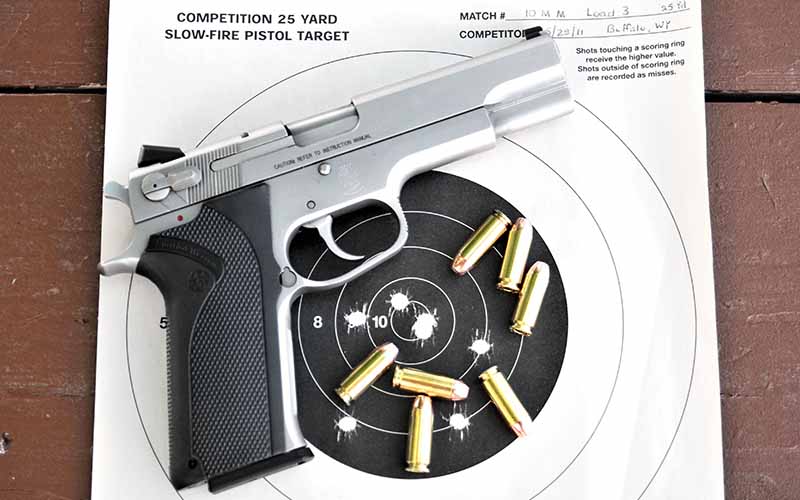
At one time, 10mm-caliber handguns were rather scarce, but there’s a resurgence of interest in such powerful tools and several manufacturers have responded to the demand. There’s a strong following of the S&W 10mm pistols, and a nice Smith & Wesson 1006 now will cost between $1,000 and $1,200, but they’re seldom seen. I once read this statement in a review of a certain automobile: “It is good mount for those who like to drive.” With regard to the S&W 1006, my comment is that “it is a good handgun for those who like power and performance.”
Editor's Note: This article originally appeared in the March 2022 issue of Gun Digest the Magazine.
More Handgun Reviews:
- The Big Snake Is Back: 2021 Colt Anaconda Review
- The Grand Puissance: Springfield SA-35 Review
- Shadow Systems MR920 Review
- Completely Customizable: Sig P320 Review
- Turkish Take On The Czech Classic: SAR 2000 Review

Next Step: Get your FREE Printable Target Pack
Enhance your shooting precision with our 62 MOA Targets, perfect for rifles and handguns. Crafted in collaboration with Storm Tactical for accuracy and versatility.
Subscribe to the Gun Digest email newsletter and get your downloadable target pack sent straight to your inbox. Stay updated with the latest firearms info in the industry.

![Best Concealed Carry Guns In 2025 [Field Tested] Wilson Combat EDC X9S 1](https://gundigest.com/wp-content/uploads/Wilson-Combat-EDC-X9S-1-324x160.jpg)


![Best 9mm Carbine: Affordable PCCs [Tested] Ruger Carbine Shooting](https://gundigest.com/wp-content/uploads/Ruger-Carbine-Shooting-100x70.jpg)
![Best AR-15: Top Options Available Today [Field Tested] Harrington and Richardson PSA XM177E2 feature](https://gundigest.com/wp-content/uploads/Harrington-and-Richardson-PSA-XM177E2-feature-100x70.jpg)
